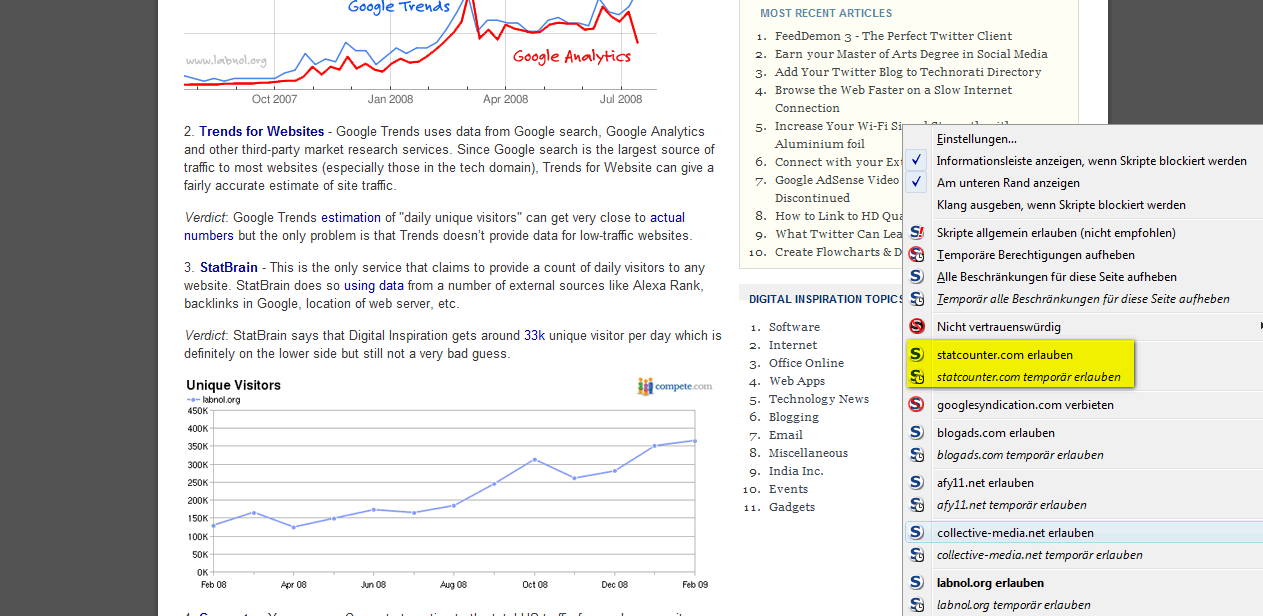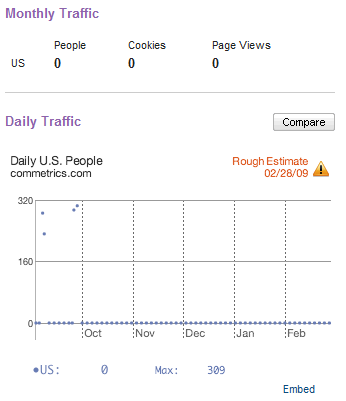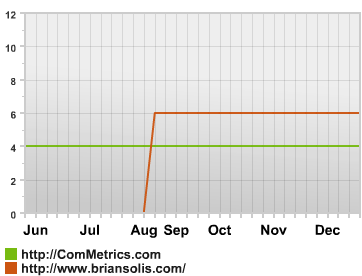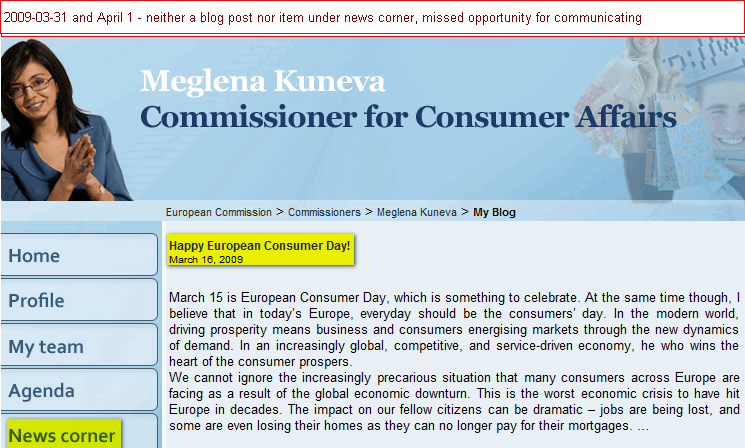 How much is too much? How much information can a website collect without infringing on users’ basic right to privacy? When does information collection become a violation of basic rights to transparency and control?
How much is too much? How much information can a website collect without infringing on users’ basic right to privacy? When does information collection become a violation of basic rights to transparency and control?
Advertisers and bloggers want to know who reads a message or ad, but while cookies can be used, once a user blocks them, statistics become inaccurate. Some experts suggest:
“… we should all admit that cookie deletion, cookie blocking, multiple computers, multiple devices, etc. have enough potential to distort the numbers as to render the resulting numbers useless when used to quantify the number of human beings visiting a site or property.” (Eric T. Peterson –Unique Visitors ONLY Come in One Size)
There are at least four reasons why statistics collected with the help of cookies may be inaccurate:

1) The more savvy your surfer, the more likely s/he controls acceptance of cookies or refuses them altogether (e.g., about 40% of surfers in Poland use Firefox). The graph on the right demonstrates now much this can skew hits acquired by counters (click on image for full-screen).
2) A user may visit the same website using different computers or ask their anti-virus software to delete cookies during each scheduled scan.
3) Business users cannot install any add-ons for their browser; one reason why Alexa.com continues to fail businesses with inaccurate usage numbers.
 4) Some services like Quantcast work fine, but only if the blogger embeds their cookie with each blog post. We embedded one in a September blog post, but none since: the result is that Quantcast can no longer estimate traffic figures with any accuracy whatsoever.
4) Some services like Quantcast work fine, but only if the blogger embeds their cookie with each blog post. We embedded one in a September blog post, but none since: the result is that Quantcast can no longer estimate traffic figures with any accuracy whatsoever.
The IAB‘s Audience Reach Measurement Guidelines indicate that measuring traffic is a challenge:
“… in order to report a Unique User, the measurement organization must utilize in its identification and attribution processes underlying data that is, at least in reasonable proportion, attributed directly to a person” and “In no instance may a census measurement organization report Unique Users purely through algorithms or modeling that is not at least partially traceable to information obtained directly from people, as opposed to browsers, computers, or any other non-human element.” (Section 1.2.4) (see Interactive Advertising Bureau – Audience Reach Measurement Guidelines – Version 1.0—February 23, 2009)
Deep-packet inspection to the rescue
It’s not surprising that, based on the above, ISPs have come to the rescue. With the help of deep-packet inspection (DPI) providers can track online activity even though consumers may have blocked cookies.
While advertisers always want to know more about website users, privacy advocates have become increasingly concerned with the growing use of DPI. DPI allows ISPs to block, shape, and prioritize traffic.
Bottom line, or, Why you need more than inaccurate statistics
If we want privacy, allowing DPI is a big no-no, however if we require more reliable and valid server-side statistics, it is one, if not the only, way to go. Something will have to give. Until then, the various services described in here should be looked at with caution.
If you are not in business to sell advertising clicks, there are more important statistics and trends to watch than just unique or repeat visits each month as delivered by your server-side statistics program.
Footprint, Usability, your Return on Connection and your Return on Microblogging scores, as well as their trends over a few months or comparison across years might be of greater interest (see image at right).
More, having your customers comment on your blog posts or building a reputation for serving quality content that results in many back-links might be of greater interest than unique monthly visitors. Plus, driving value from non-revenue generating activities such as blogging or micro-blogging requires innovative ways to communicate with your target audience. We invite you to register at My.ComMetrics.com to compare yourself, watch your improvement and learn how you can increase blogging value beyond the theoretical.
 In practice, this means using the tool effectively, as well as measuring unique visitors. For instance, European Consumer Commissioner Meglena Kuneva gave a keynote speech for the Roundtable on Online Data Collection, Targeting and Profiling (Brussels, 31 March 2009). Unfortunately, she forgot to post a blog entry inviting citizens to comment about this important initiative. As this case illustrates, using social media and blogs effectively to have a conversation with customers or constituents means going beyond unique visitors or page-views.
In practice, this means using the tool effectively, as well as measuring unique visitors. For instance, European Consumer Commissioner Meglena Kuneva gave a keynote speech for the Roundtable on Online Data Collection, Targeting and Profiling (Brussels, 31 March 2009). Unfortunately, she forgot to post a blog entry inviting citizens to comment about this important initiative. As this case illustrates, using social media and blogs effectively to have a conversation with customers or constituents means going beyond unique visitors or page-views.
What is your take? Please leave a comment and share your opinion on this. Thanks.
Pingback: Urs E. Gattiker
Pingback: FT ComMetrics Blog Index released: KISS the blog bride
Pingback: 2010 trends: Social media marketing - trendwatch, social media monitoring, best metrics, blog benchmark, brand monitoring, benchmark software, social media, best practice, KPI, blog footprint, blog resonance, blog impact, blog health check, - ComMetrics:
Pingback: Budgeting for SM: Cost-benefit analysis vs. ROI - blog benchmark, KPI, ROI, KISS, SMART metrics, social media monitoring, best metrics, best practice, benchmark software, cost-benefit analys is,social media - ComMetrics: Developing strategic KPIs, best me